In the recently completed 10-day yoga intensive, the major focus was on pranayama (breathing techniques) and meditation. In the program, we covered several different pranayama techniques. One of the main objectives of these intensive programs is to encourage the participants to develop a regular home practice of their own after the course is over. Most of the students have asked me if I could provide instructions for these techniques which they can use as reference material for their home practice. In this post and several subsequent ones, I will be providing details on the techniques that we covered during the course.
Sectional Deep Breathing
The sectional breathing techniques are used as a preparation for the full, deep yogic breathing practice in Pranayama. These can correct the breathing pattern and also help to increase lung capacity by encouraging fuller breathing into different areas of the lungs. Deep breathing into different parts of the lungs brings in abundant supply of fresh oxygen into these areas. This helps improve the health of the lungs as well as making more oxygenated blood available for each and every cell of the body. Because our attention is focused on different parts of the lungs, our overall awareness of the breathing process is enhanced. In the following breathing practices, keep the eyes closed so you can completely focus on the depth and quality of breathing as well as on the movement of the arms and shoulders.
For each breathing cycle, use the Ujjayi breathing technique, keeping each breath deep and soft. It is important not to strain the breathing in any way. Try to deepen the breath only so much as not to impact the depth and quality of the subsequent breath. With practice over a period of time, you will be able to prolong the duration of each inhalation and exhalation.
There are three parts to the sectional breathing:
Abdominal Breathing
This is also known as Diaphragmatic Breathing in which we breathe into the lower region of the lungs.
For practicing this breathing, sit erect in any comfortable seated posture. Keep the thumbs on the waist and spread the hands with the middle fingers touching each other just above the navel. The palms are parallel to the floor, facing down. Begin deep, slow and continuous inhalation. As you inhale, your awareness is at the lower part of the lungs. With a gently downward pressure of the diaphragm, feel the abdomen filling up like a balloon. As the belly fills up, the middle fingers which were originally touching each other will begin to separate out. At the end of inhalation, pause for a brief moment and then start deep, slow, continuous exhalation. As you exhale, lift the diaphragm upward with the result that you can become aware of the cavity building up in your abdomen and the navel moves backwards toward the spine. In this position, your middle fingers will rejoin with each other. At the end of exhalation, pause for a brief moment and continue with the next cycle of inhalation/exhalation. Maintain deep and soft Ujjayi breaths for each breathing cycle making sure that the breath is not strained in any way. Try about 5 to 7 rounds of this breathing cycle.
Middle Chest Breathing
In this breathing, there is a conscious effort to expand the chest and the ribcage. This impacts the middle part of the lungs.To practice this breathing, bring your hands together, interlock the fingers and place the hands behind your neck. Inhale in place and as you exhale, bring the elbows together in front of you, softening the chest. As you begin to inhale, pull the elbows apart from each other, expand the chest closing the gap between the shoulder blades. Maintain deep and soft Ujjayi breaths for each breathing cycle making sure that the breath is not strained in any way. Try to synchronize the movement of the arms with the appropriate breath. In this manner complete 5 to 7 rounds of this breathing cycle.
Upper Chest Breathing
Here, we engage the upper part of the lungs in the deep breathing cycle. To practice, interlock the fingers of the two hands and keep the hands on top of the head, facing down. As you begin to inhale, turn the palms up and start lifting the hands up so the arms become vertical. While you are raising the arms up, pull the shoulders up and lift the collar bones. While exhaling, begin to lower the hands and finally turning the palms down, rest the palms on the head again. Try to synchronize the movement of the arms with the appropriate breath. Maintain deep and soft Ujjayi breaths for each breathing cycle making sure that the breath is not strained in any way. In this manner complete 5 to 7 rounds of this breathing cycle.
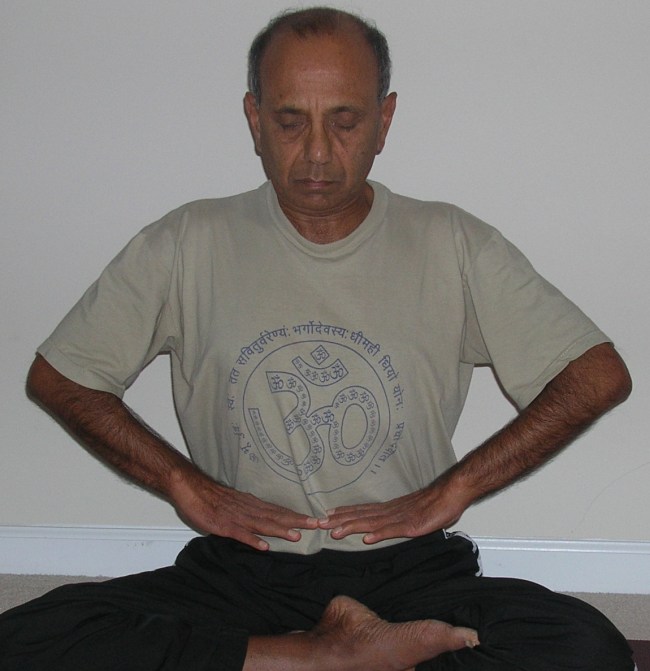
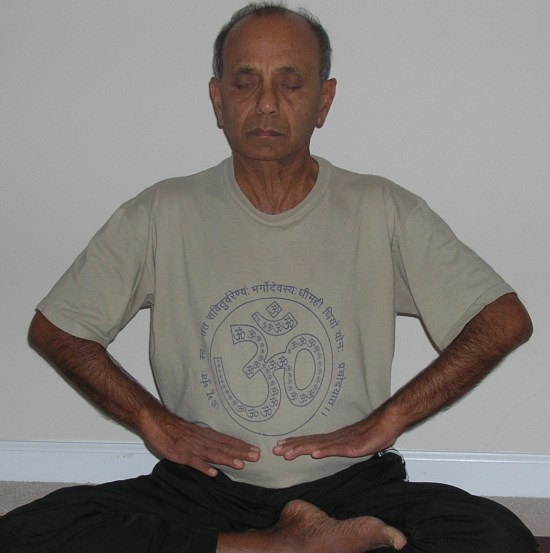
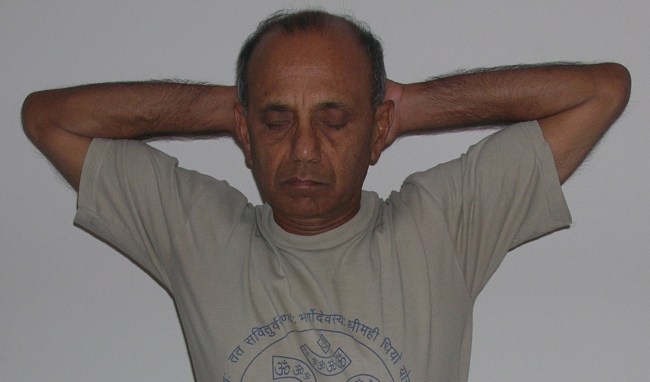
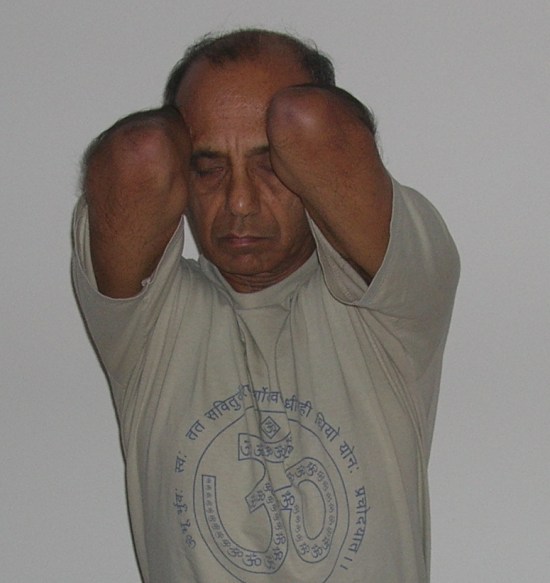
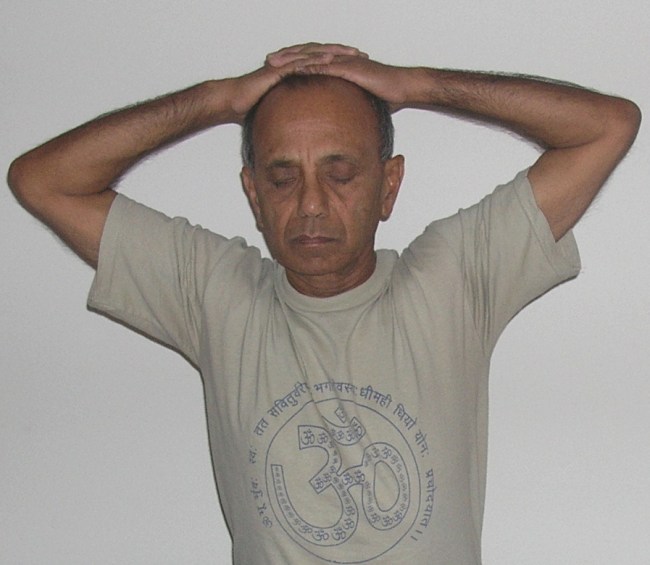
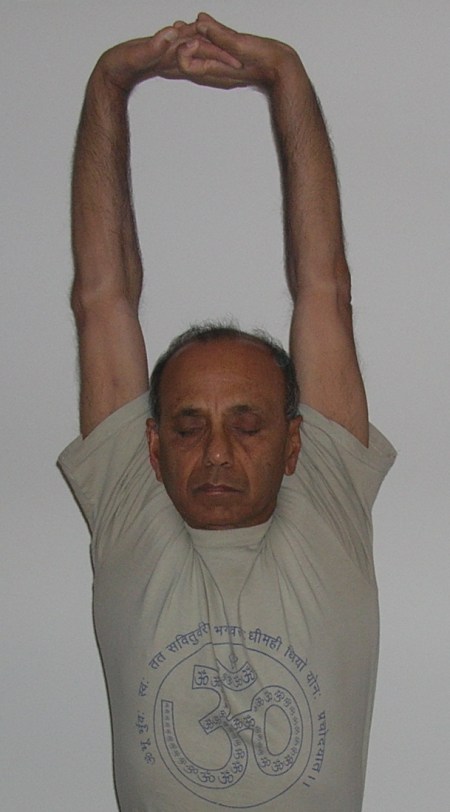
Respected Shri Subhashji,
Thanks for your deep Yogic Breathing. If I am correct, this pranayam takes care of both Ujjayi as well as deep breathing exercise.
Regards,
Ramani
Indeed, Ramani, this deep breathing pranayama is practiced using the Ujaayi breathing technique.
Thanks, Kyle, for your feedback. I hope you are able to continue your practice on a regular basis.
Thanks you for the instructions.
Pursed lip exercises saved my husband’s life, literally! His COPD (CHRONIC OBSTRUCTIVE PULMINARY DISORDER) was so bad that his doctor finally recommended that he perform belly breathing at least 5 times a day. After 10 days, his breathing really improved, and after 6 weeks he’s breathing well enough to enjoy his hobbies and get outdoors again.
[…] an earlier post, we talked about the deep sectional breathing sequence. In the sectional breathing, we try to engage three different areas – top, middle […]